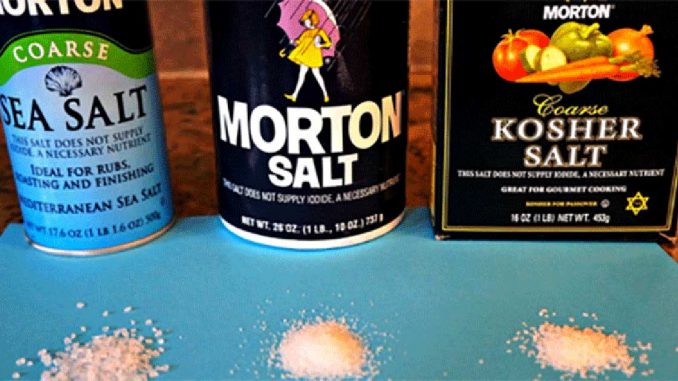But wait, isn’t all salt technically from the sea? Then what makes this specific ‘sea salt’ so special? The real answer? Not a single thing. We might think we are doing ourselves a favor by buying this special healthier version, but the truth is in favor of the commercialism.
But hold on, that by no means should convince you to just throw your hands in the air in exasperation and give up by buying the cheapest container you can find.
Read on to find out some crucial information about the sea salt scam and how to avoid it in the future.
Is Trusting The Label a Mistake? Apparently So.
A great percentage of humanity cannot possibly imagine a single day without salt. As for all those cautionary tales on how deadly salt can be for you, well, let’s just say that if it’s been around since the time of the creation of civilization in its most basic form.
And ever since then it has been appreciated as a treasured good, so it can’t be all that bad. But take note, this is referring to the real thing, not the store-bought processed kind.
As with every ‘fad’ this world has come up with, health-wise included, when something catches on, there’s no going back. So now more and more shops offer this sea salt label. And, as a natural consequence, more and more people keep buying them.
Ironically, it is now practically harder to find the regular kind than the other way around. This is good news, right? I mean, surely we are making a step in the right direction with this move. But alas, it is not all black and white. Once again, we are under the magnetizing influence of yet another huge marketing scam.
Iodine in Sea Salt
If you listen to what healthwyze report has to say on the matter, the F.D.A. necessitates that any salt which does not contain chemically added iodine is required to wear a label of warning. It must state that it doesn’t supply the necessary nutrient, iodide.
Consequently, distributors of sea salt have little choice but to place lies on their labels. Now get this. Non-diluted sea salt actually has more iodine than the iodized table salt version. And what about iodide you might ask?
Iodide is actually a combination of iodine and salt. A better name for it, in honesty, would be “potassium iodine”. What’s more, the perfectly natural iodine already found in sea salt is denigrated just so it could put in a better light the less healthy varieties of the chemical industry.
And by ‘less healthy’, we mean to point out that the inorganic iodide contained in table salt lacks the complementary minerals that you can otherwise find in the natural sea salt versions.
But, tragically, the distributors of this product are by no means permitted to have the truth printed on their labels, since doing so would cause them serious legal trouble, due to them disrespecting the labeling requirements, to begin with.
The Real Content of Sea Salt
To explain it in short and simple terms, sea salt is the product of evaporated ocean and sea water with very little processing involved. That way, it also contains some of the minerals originally found in the water itself.
On the other hand, table salt is mainly taken from deposits from underground. And that way, it must be heavily processed so that it removes the minerals. The processing manner will affect its color and, more importantly, the taste.
Having said that, it will not have any effect on the nutritional value at all. So, the gist of it is, while sea salt and table salt can boast with almost the same nutritional levels, they have the same quantity of sodium chloride.
So, Bottom line – Tips On How To Avoid It?
Well, firstly, if you are looking for real quality sea salt, you’d be wise to look at the color. It should be non-white. Rather, a sandy or brownish tint to it and you can be sure that it is what you need to get your fill of all the vitamins and nutrients that salt can, and should, offer.
Interestingly, one of the healthiest salt variants is the Himalayan salt which is, wait for it, pink in color! That’s right, it has a pinkish hue to it and can brag with as many as 84 minerals, as well as trace elements. This is why people call it the purest type of salt in the world.
But if for some reason you haven’t had enough with this, here’s another healthy variant: Celtic Sea salt. Oh, these exotic names! Joking aside, since it comes from the clay from the salt flats, it is a peculiar light gray in color.
It is called this way because traditional Celtic methods are used to collect it, in this case by hand. The wow-factor to it: it contains a little less than 100 microminerals!
So, hopefully, the next time you will be a little bit wiser when you go to purchase your salt. After all, no one wants to remain a victim of the great sea scam or any other scam for that matter.
Source Living Traditionally | Best Healthy Guide


